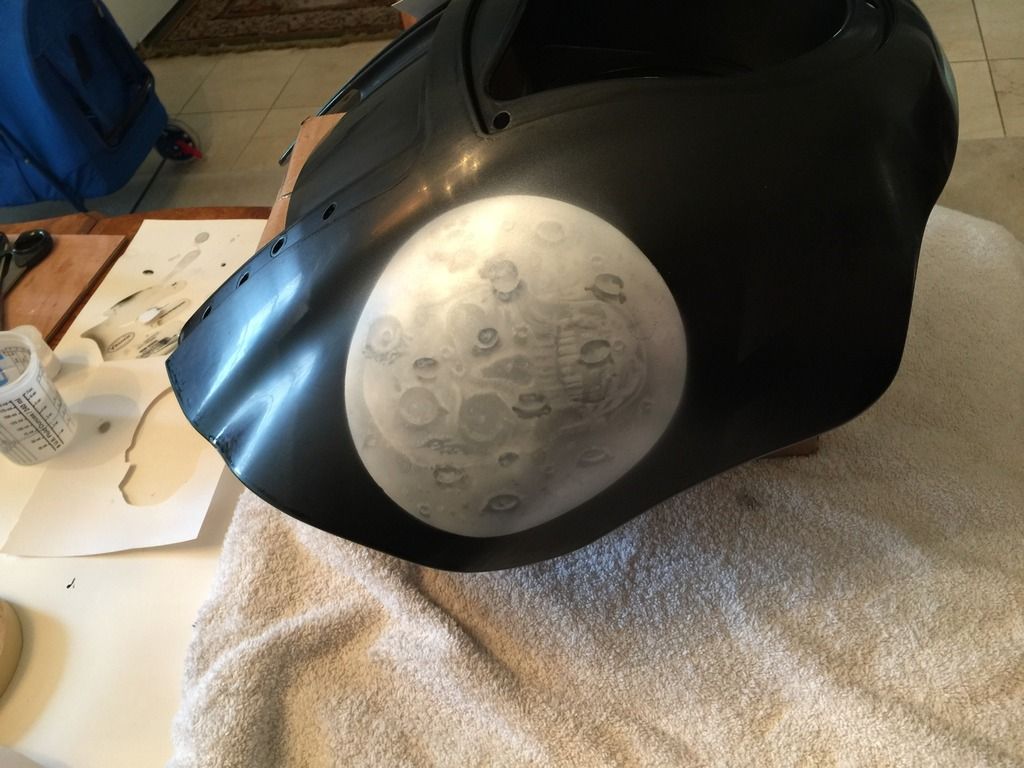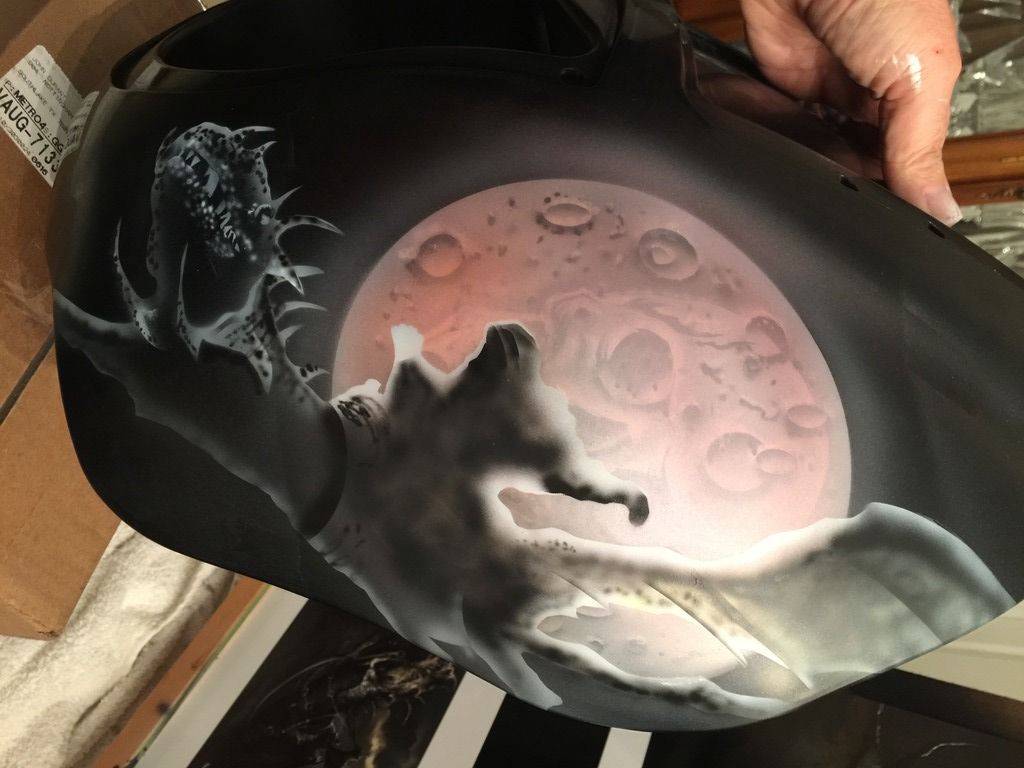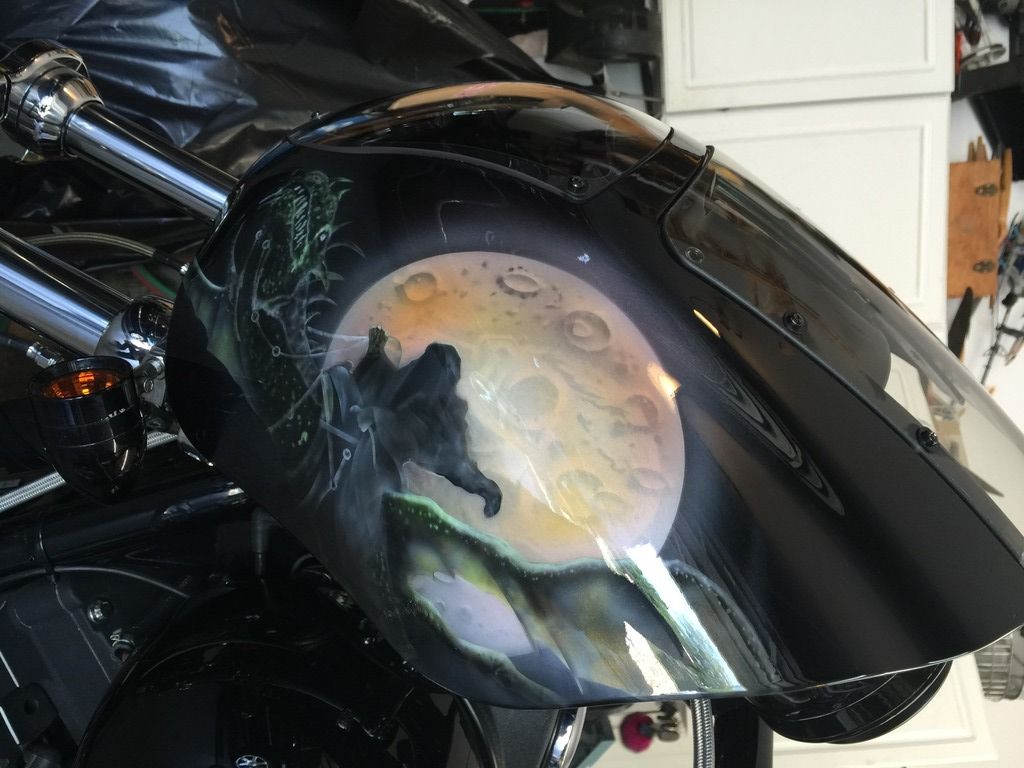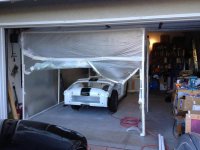Just to demonstrate a use for 2000 grit, here is a little side project I did a couple weeks ago. OK, you caught me, this is what I was doing when I took a break from the TR2!?!

This is a small fairing for my Harley. I epoxy primed in black, to more closely match the color I planned to paint it. Matching the primer to the color allows you to lay less color without any "show through" if you get an area too thin (not intentionally, of course). I sanded the final primer with 400 grit, and then sprayed a base coat of PPG brand DBC black color, thinned 2-1 with "warm" temperature reducer.
I let the DBC dry overnight, and then sanded it completely with 2000 grit to give the airbrush paint a surface it could bond to. I then airbrushed the moon (with a skull on it if you look closely). The 2000 grit keeps the surface smooth, and is necessary since subsequent coats won't stick after 24 hours of drying.
Steve, if you look, the finish above still "looks" shiny. In reality it is very rough at the microscopic level. Shine is merely smaller scratches...but they are still scratches that subsequent coats can completely bond to.

My son wanted a reaper. My daughter wanted a dragon (their school mascot). So I decided to make it a reaper riding his dragon during a harvest moon. This is the initial airbrushing.


The brushing was allowed to dry overnight. Again, I had to barely rough the design with 2000 grit...following the rule that after 24 hours the base MUST be roughed to facilitate a good adhesion of the next coat. If I were merely painting the fairing straight black under clear, I could have shot the clear after the color set for 30 minutes...and not had to rough the base at all.
I finished with 3 coats of urethane clear. I used a "cool" temperature reducer and hardener...because I wanted it to dry fast. That way I could lay it very thick without running. As you can imagine, the airbrushed design comes out rough textured, and you cannot smooth it with sanding or you will loose part of the detail. Also, buffing such a small part would be a pain, so I needed to lay down very thick coats of clear, to smooth the brushing, but spray it just right, so it would flow smooth but not run.
I accomplished this by allowing a full 30 minutes between coats to prevent running. If you lay the coats down to fast, the previous coat will sag, causing the current coat to run. But do it just right, and the surface is absolutely smooth, flat and glossy. No buffing needed. If you lay too dry, you would have to fine sand to remove the orange peal and then buff with a wool buffing pad.
I know this job was off topic, but it shows how you have to understand your paint, and plan each step. You cannot be afraid to throw up your hands and say, "I don't like it"...and sand a bad top coat like it is primer so you can re-spray it. I did not like my first moon attempt...it got completely sanded off for the next try. Painful....frustrating!...but for the many years you will enjoy this paint job, it is a small price to pay!

 Hey there Guest!
Hey there Guest!
 smilie in place of the real @
smilie in place of the real @
 Pretty Please - add it to our Events forum(s) and add to the calendar! >>
Pretty Please - add it to our Events forum(s) and add to the calendar! >> 







 A friendly reminder - be careful what links you click on here. If a link is posted by someone you don't know, or the URL looks fishy, DON'T CLICK. Spammers sometimes post links that lead to sites that can infect your computer, so be mindful what you click.
A friendly reminder - be careful what links you click on here. If a link is posted by someone you don't know, or the URL looks fishy, DON'T CLICK. Spammers sometimes post links that lead to sites that can infect your computer, so be mindful what you click.